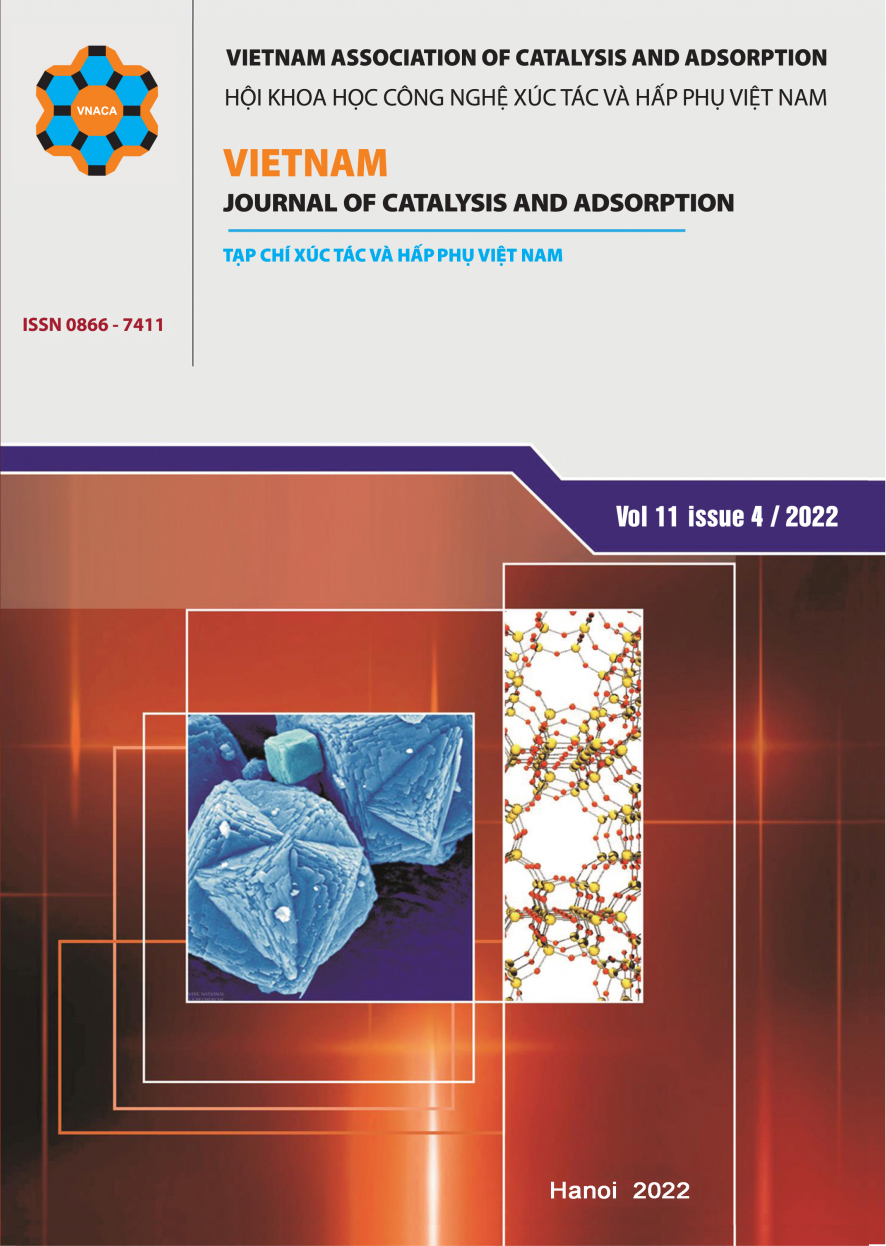Study on using rice-husk ash as an adsorbent for some antibiotic and anti-inflammatory drugs in aqueous
DOI:
https://doi.org/10.51316/jca.2022.077Keywords:
Rice-husk ash, antibiotic drug, anti-inflammatory drug, adsorptionAbstract
Rice-husk ash (RHA) is prepared from a by-product of rice production. Its main component is silic dioxide. Thanks a zeolite-like structure, it could be used as an adsorbent. In this study, RHA was used to remove some antibiotic and anti-inflammatory drugs in aqueous medium such as Cefuroxim, Dexamethasone, Methylprednisolone, Prednisolon. These drugs are recommended to use at home for Covid-19 patients. The RHA has a specific surface area of 179.797 m2/g), the pore size of 63.547 m2/g, the average particle size of 3.8 mm. The zeta potential of RHA in distilled water of -42.5 V, the point of zero charge of 6.7. The main composition of elements in RHA is Si, O, C. Among investigated samples, the Cefuroxim adsorption efficiency of RHA is the best, with a adsorption capacity reached 1.43 mg.g-1 and adsorption efficiency reached 86.00 % at the optimum adsorption condition of pH solution of 7, adsorption time of 150 min, RHA weight of 0.3 g and the initial drug concentration of 5.0 mg.L-1.
Downloads
References
L. Can, T. Li, Z. Liming, T. Weiqian, M. Lanqing, Front. Environ. Sci. 9 (2021) 692298. https://doi.org/10.3389/fenvs.2021.692298
J. Dutta, A. A. Mala, Water Sci. Technol. 82 (3) (2020) 401-426. https://doi.org/10.2166/wst.2020.335
A. Grela, J. Kuc, and T. Bajda, Materials (Basel) 14(17) (2021) 4994. https://doi.org/10.3390/ma14174994
I. Braschi, S. Blasioli, E. Buscaroli, D. Montecchio, A. Martucci, J. Environ. Sci. (China) 43 (2016) 302-312. https://10.1016/j.jes.2015.07.017
S. Blasioli, A. Martucci, G. Paul, L. Gigli, M. Cossi, C. T. Johnston, L. Marchese, I. Braschi, J. Colloid. Interface. Sci. 419 (2014) 148-159. https://10.1016/j.jcis.2013.12.039
N. Jiang, R. Shang, G. J. H. Sebastiaan, L. C. Rietveld, Water Res. 144 (2018) 145-161. https://doi.org/10.1016/j.watres.2018.07.017
G. Kaur, N. Singh, A. Rajor, J. Contam. Hydrol. 236 (2021) 103737.
https://10.1016/j.jconhyd.2020.103737
D. Balarak, F. Bandani, Z. Shehu, N. J. Ahmed, J. Pharm. Res. Int. (2020) 84-92. https://10.9734/jpri/2020/v32i830475
N. V. Hưng, N. N. Bích, N. H. Nghị, T. H. Bằng, Đ. T. T. Lê, Tạp chí Hóa học 53(4) (2015) 491-496.
J. Suwanprateeb, K. Hatthapanit, J. Appl. Polym. Sci. 86 (2002) 3013–3020.
S. S. Alias, Z. Harun, N. Manoh, M. R. Jamalludin, Polym. Bull. 77 (2020) 4043–4075. https://doi.org/10.1007/s00289-019-02950-5
V. C. Sethuramalingama, S. Prabagarana, K. Ganesan, Mater. Today: Proc. 37 (2) (2021) 2207-2213.
N. T. Mai, L. T. Hoan, H. T. H. Thủy, V. T. Hiếu, Đ. T. M. Linh, N. T. Vương, Tạp chí Khoa học Giao thông vận tải 71 (9) (2020) 1027-1038. https://doi.org/10.47869/tcsj.71.9.2
C. Yajun, W. Fenghe, D. Lunchao, Y. Hao, G. Jay, J. Mol. Liq. 222 (2016) 487-494. https://doi.org/10.1016/j.molliq.2016.07.090
G. Kaur, N. Singh, A. Rajor, R. K. Arya, Environ. Sci. Pollut. Res. (2022).
https://doi.org/10.1007/s11356-022-18961-1
Đ. K. Tại, V. X. Hồng, Tạp Chí Khoa học và Công nghệ Việt Nam (Bản B) 62 (1) (2021) 66-69.
A. S. Yusuff, Arab Journal of Basic and Applied Sciences 26 (1) (2019) 89–102. https://doi.org./10.1080/25765299.2019.1567656.
M. N. Khan and A. Sarwar, Surface Review and Letters 14, (3) (2007) 461–469.
F. A. Adekola, D. S. S. Hodonou, H. I. Adegoke, Appl Water Sci 6 (2016) 319–330. https://doi.org/10.1007/s13201-014-0227-1.










